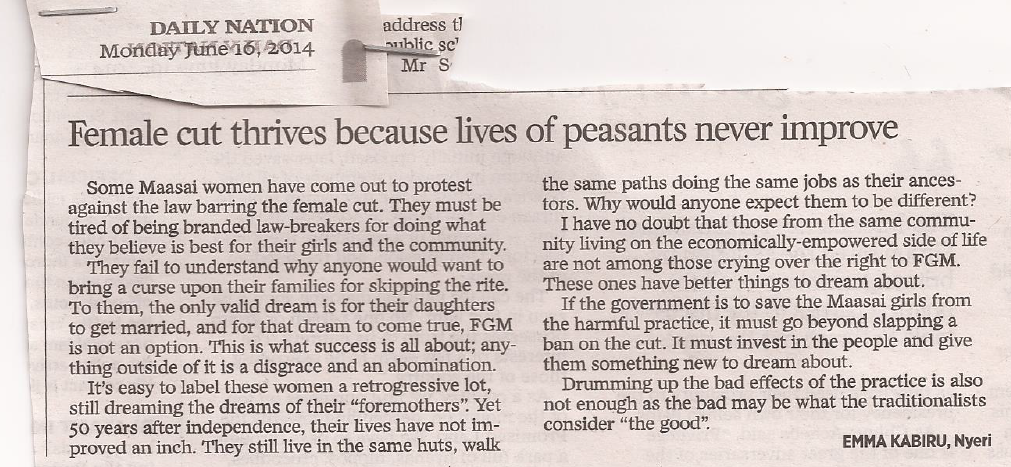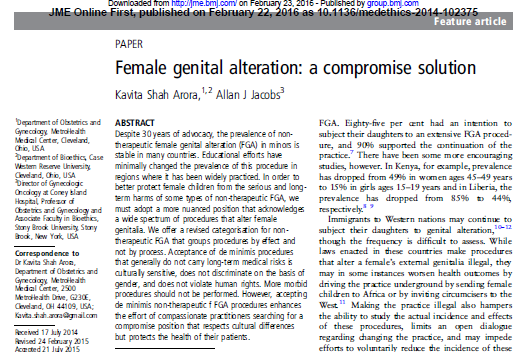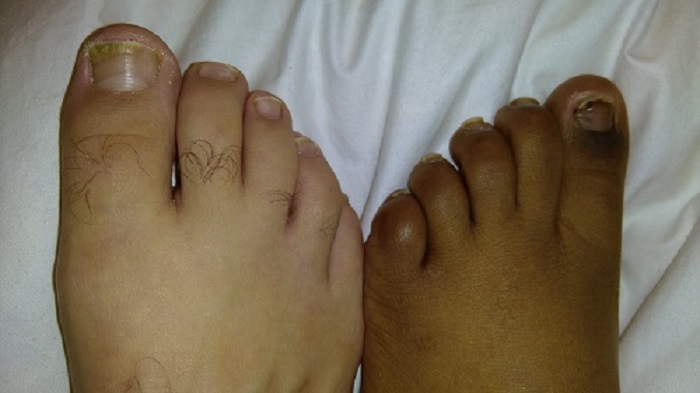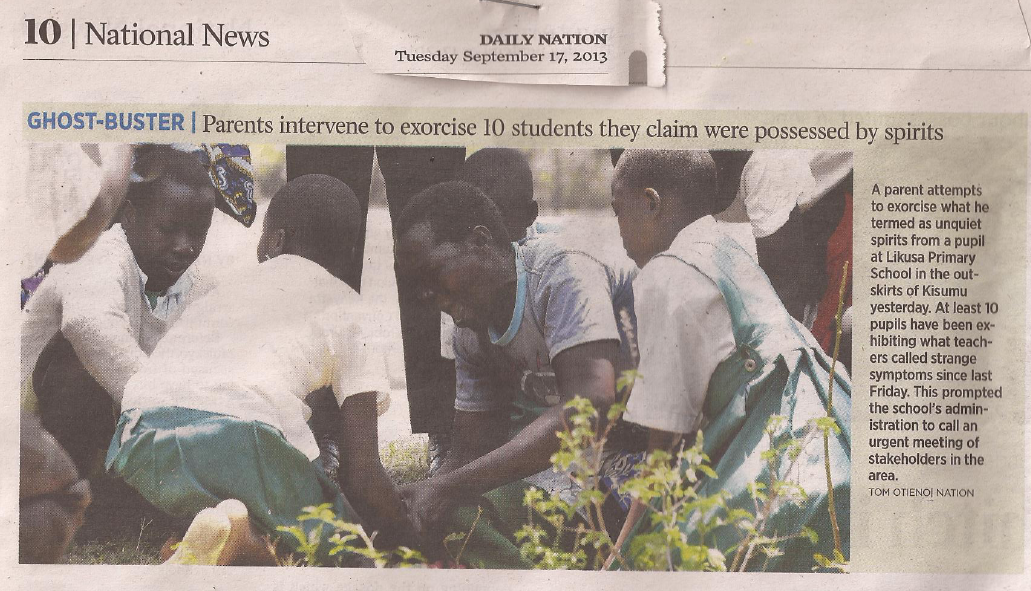Fighting FGM- Part II
The female circumcision debate has heated up in the media and in parliament . I have followed the discussion in The Daily Nation and there are some rather interesting tit bits. Take this letter to the editor by a regular contributor.
She was of the opinion that slapping a ban on FGM is not enough and explains that if these women are given something else to dream about, the practise will die.
The topic for the ‘small debate’ at the bottom of ‘letters to the editor’ was asking what people thought of the push by Maasai women to legalise female circumcision.
The responses were varied and interesting but clearly shows that many feel more needs to be done in the fight against FGM than criminalising it. Kenya is 17th from the top of the list of countries with a high proportion of women who are circumcised. Globally, 140 million women and girls are circumcised and 2 million girls are added to that list annually.
A paper by Susan Jones in the European Journal of Obstetrics, Gynecology and Reproductive biology, published in 2004 discusses why some programs in the anti-FGM field have worked and others have not.
Jones and colleagues note that although the political and legal environment has grown completely hostile to the practise, it has not deterred FGM. In the past, program planners spend a lot of energy informing, mainly women, on the health disadvantages of FGM. They believed that if women understood this, FGM would end. But most of these programs fail and Jones and her colleagues believe it is because they failed to understand and respect the culture of those involved in the practise.
They give an example of the Sabiny people of Uganda who were laden with missionary anti-circumcision messages from the 1940’s. At one time, an anti-circumcision campaign program launched in the area that actually lead to an increase in FGM. So incised were the Sabiny people that ‘arrogant outsiders’ were passing judgement on their culture and traditions.
A different approach was started, which, instead of forcing people to abandon the practise, focused more on prolonged education campaigns not just about health problems of FGM but about human rights, women’s health and the dangers of FGM. This program was replicated in Senegal with great success. The societies themselves arrived at the decision to end FGM.
That feeling of ‘arrogant outsiders telling us what to do’ was expressed in ‘small takes’ in the newspaper a few days ago
And this thinking is gaining momentum not just among the Maasai but the Kalenjin as well.
However, it’s not all doom and gloom and we can learn from our very own success stories. One of them being alternative rites of passage that are practised among the Meru. It is known as the ‘Ntanira na Mugambo’ – circumcision through words
This is where the community organizes events and the girls go on a week-long counselling session that ends with a ceremony of music, dancing, presents and feasting. In these programs, the older women retain their authority. This Meru program has been reported to have avoided 1,000 FGM in its first 8 years of operation. The program works because the whole community, including men are involved.
Other successful programs also incorporate the training of women circumcisers with alternative skills, usually as health workers. As they are still held in high regard in the society and earn some money from their training, they do not feel the need to hold on to their circumcising job. Instead they help the community fight more serious issues that are of more concern to the community that the health risks of FGM, which include communicable diseases and malnutrition.
In Emma’s letter in the Daily Nation, she mentioned the lack of choices by women. Jones notes in her paper that in societies where FGM is very high, women can only find a place of security through marriage and having a family. If they do not follow these rules that involve circumcision, then they will not get married and their future will be destitute. Their parents do not want this for their daughters, therefore will have them circumcised so that they are marriageable.
Jones gives the example of the Chinese and their footbinding where little girls had the bones of their feet broken and bound so that they were tiny, some girls had feet as tiny as 5 inches. Women with tiny feet were considered marriageable and though it led to a painful life for these women, the practise continued for thousands of years. To end it, ‘pledge societie’s were formed were families who did not want their girl’s feet bound came together with families who agreed that their boys would marry the girls whose feet were not bound. Since girls who were not foot-bound had a ‘marriage market’, then the practise lost its steam.
In the same way that when parents can see that their uncircumcised girls can get husbands, they will let them stay as they were born to be. Stopping FGM then becomes a social rather than individual change.
Within the ‘prohibition of female genital mutilation Act’ of 2011, in the list of ‘offences’, I found this one that I would be glad to see put into more use as a way to reduce FGM:-
Any person who uses derogatory or abusive language that is intended to ridicule, embarrass or otherwise harm a woman for having not undergone female genital mutilation, or a man for marrying or otherwise supporting a woman who has not undergone female genital mutilation, commits an offence and shall be liable, upon conviction, to imprisonment for a term not less than six months, or to a fine or not less than fifty thousand shilling, or both.
Any person who has an interest in seeing the back of FGM must have been shocked by the shenanigans of the Kiambu Governor, William Kabogo who had a little something to say about the Member of Parliament for Thika town, Alice Ng’ang’a last year.
Ending female circumcision will not happen if women are targeted for education against the ill or jailed for circumcising their girls. The whole society has to be involved – both men and women. If there is a buy-in form everyone, the practise will end.
Like I said last week – there is a reason why a Somali family raising their daughter in the UK will bring her to Somalia to undergo a very brutal type of female genital mutilation and then take her back home to the UK. They are not evil parents – they want what is best for their daughter – to get married and be respectable. Let us not blind ourselves, such a practise will not end purely by criminalisation.
Comments
-
-
tabsmwangi
Sam
That’s great to hear about the program in Maasai-land, if it involves the whole community, including the circumcisers, there is no reason why it will not work.
-
Comments are closed.










Samantha Henderson
Hi Tabs!
I have very much enjoyed your blogs on FGM.
My friend, Nick Redding, runs Sponsored Arts For Education who have a troup of Maasai in the Loiter Hill, called SAFE Maa, they are currently running a programme to encourage the Maasai ladies to collaborate and evolve an alternative ceremony for the rite of passage from girl to womanhood. It, like the Meru Project, involves the whole community and is becoming a successful option for them now.
Long may that continue!
Sam XXX
Sent from my iPad
>